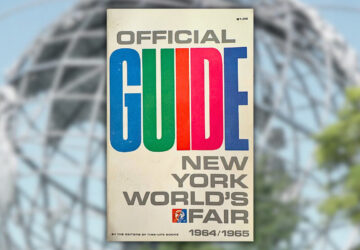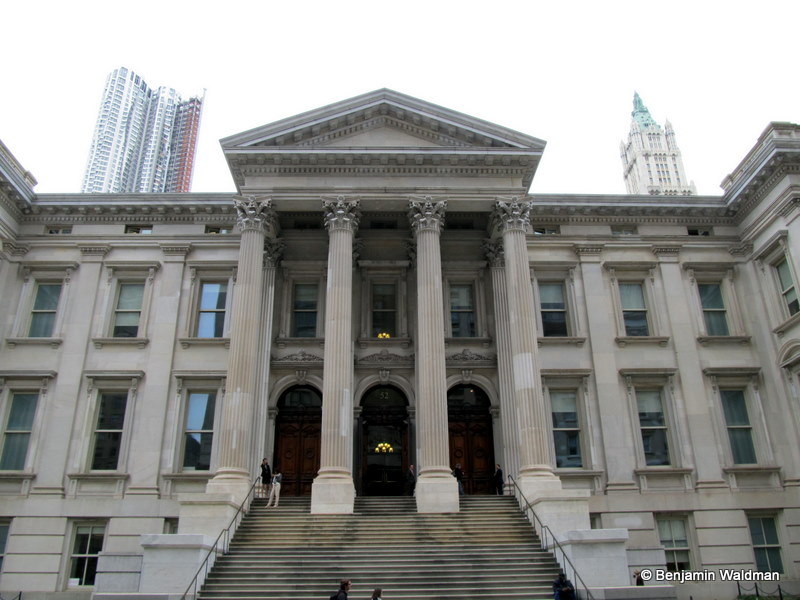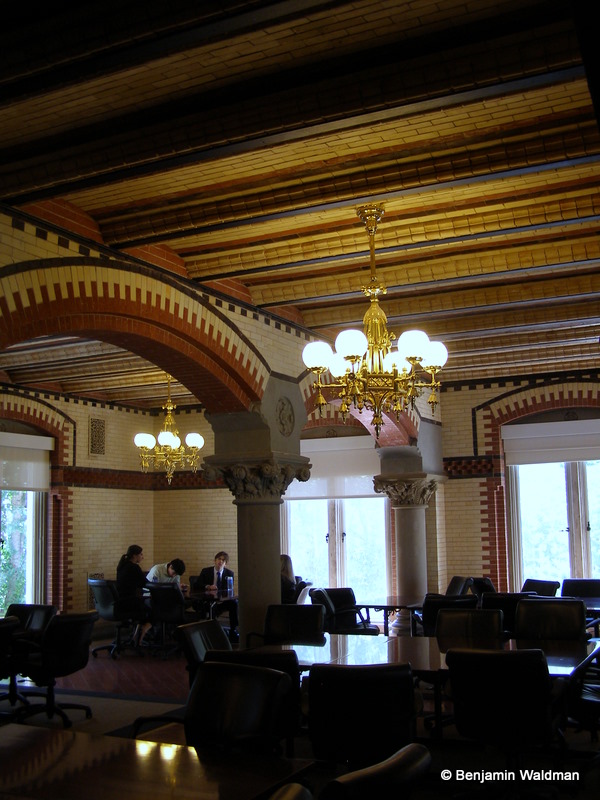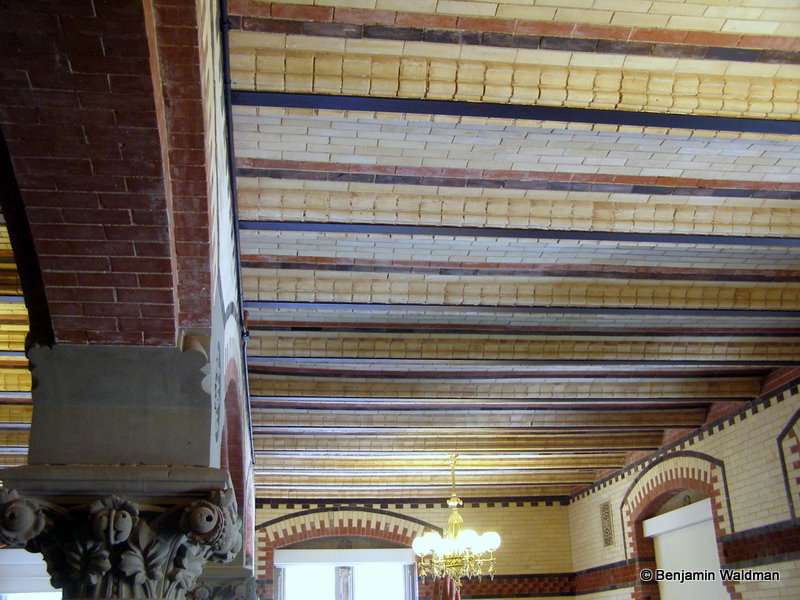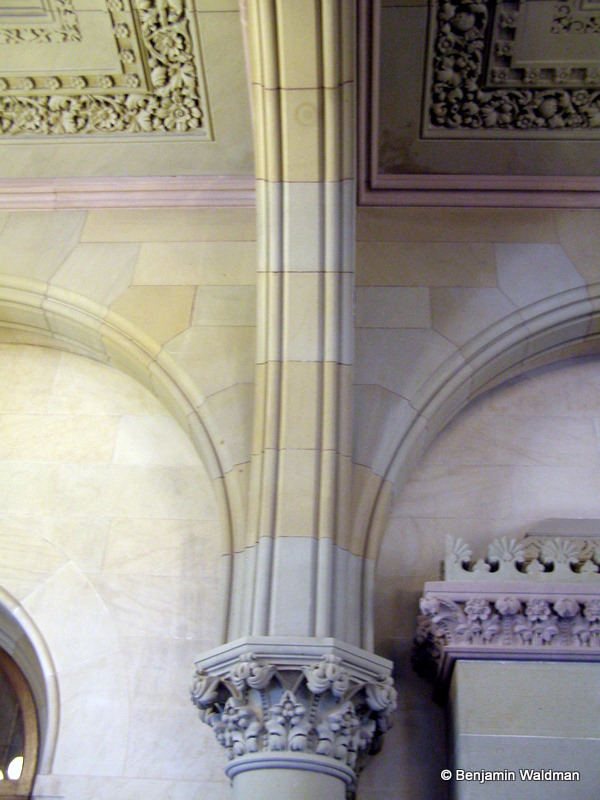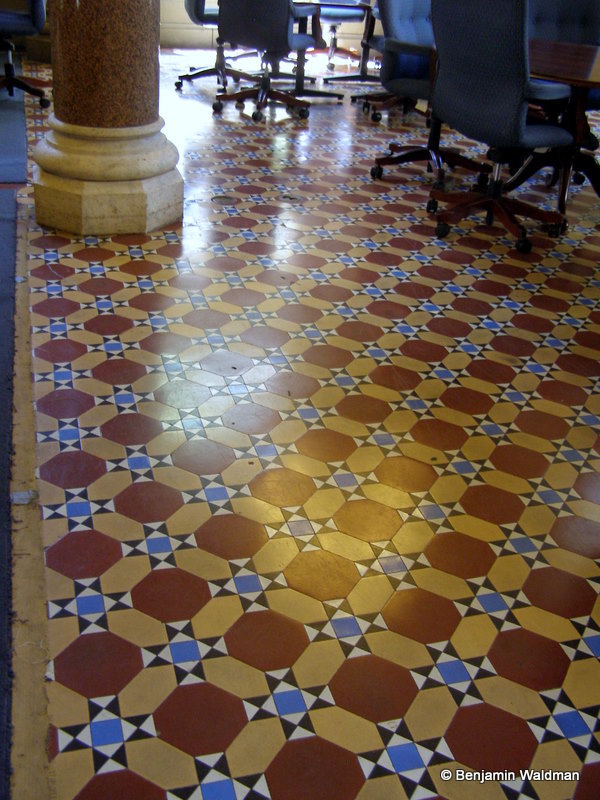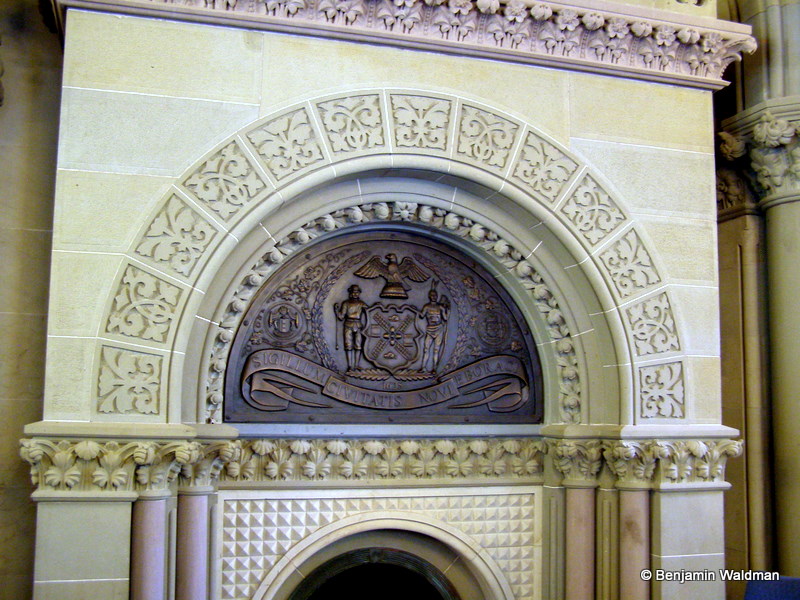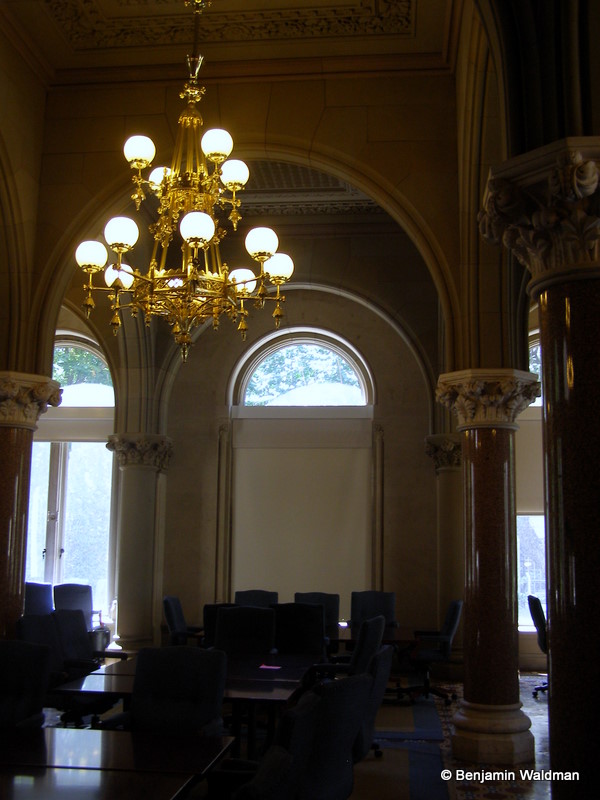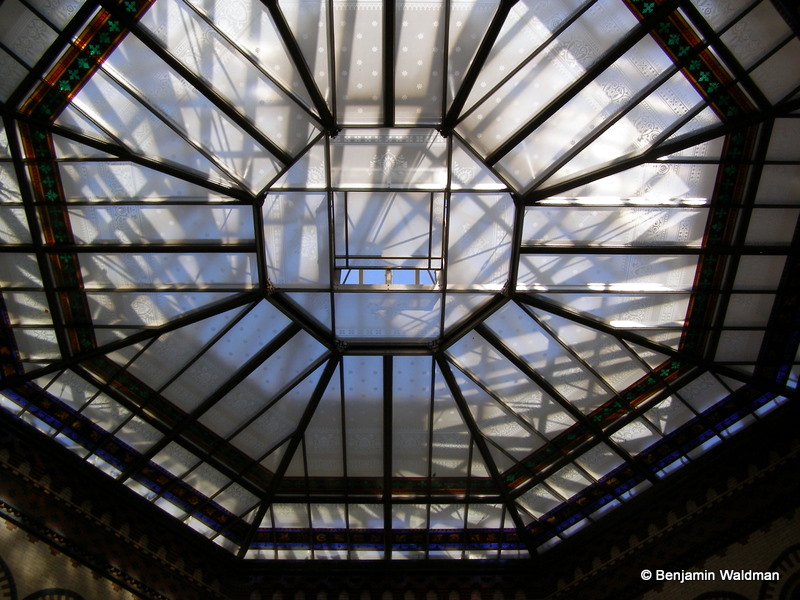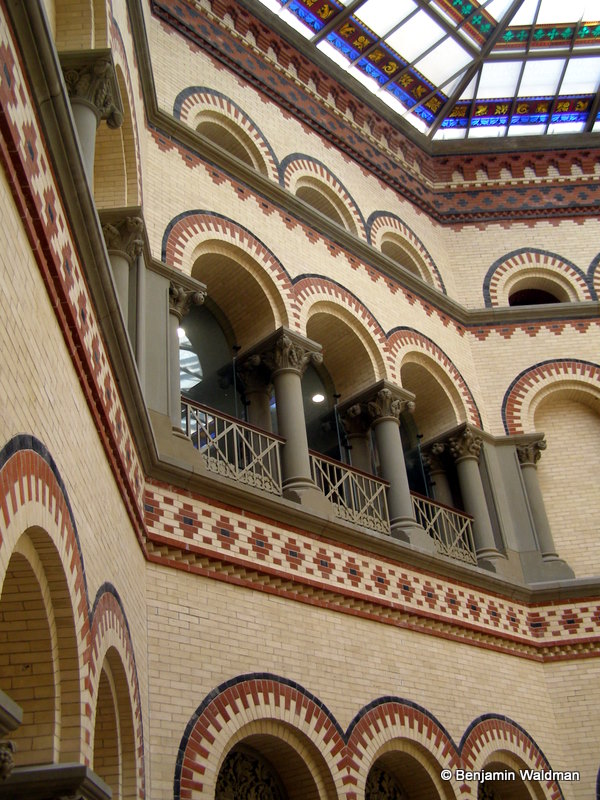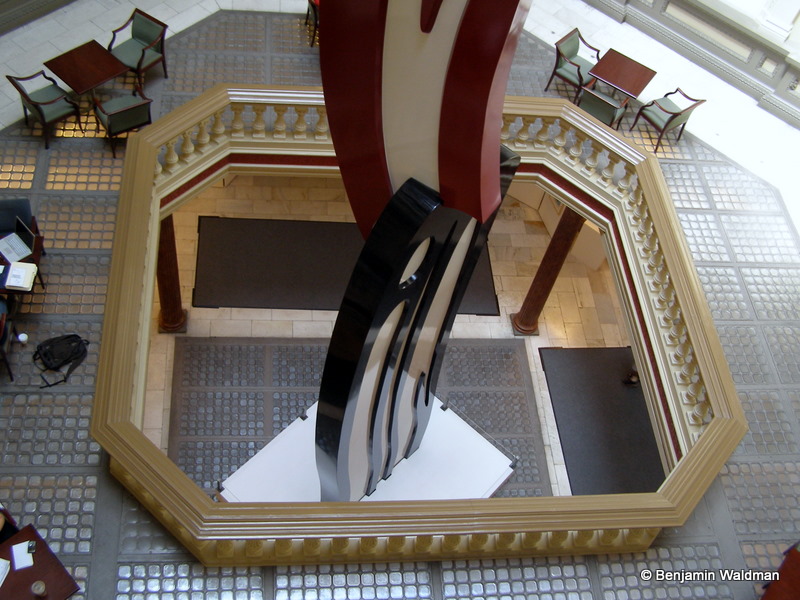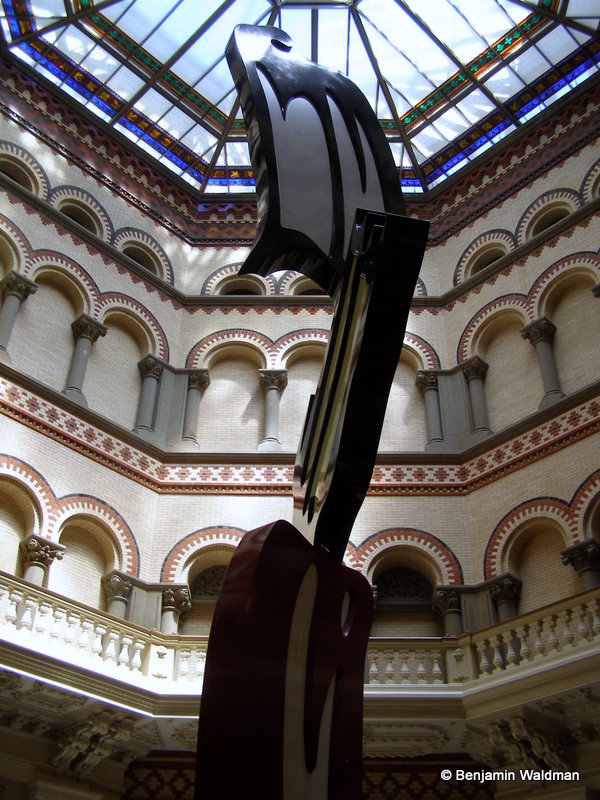Located on Chambers Street, in the heart of the Civic Center, the Tweed Courthouse currently houses the headquarters of the New York City Department of Education. Tours of the courthouse are run by the New York City Public Design Commission, which also leads tours of Gracie Mansion and City Hall. The tours provide a mix of history, architecture, and interesting trivia, and allow visitors to see buildings that are otherwise closed to the general public. Unfortunately, since the DOE’s headquarters and a school are located in the courthouse many of the rooms are off limits to the tours. One can only imagine how different access to the courthouse would be had Mayor Giuliani’s plan to relocate the Museum of the City of New York to the courthouse been realized.
The former courthouse owes its colloquial name to the notorious Boss Tweed who headed Tammany Hall (the Democratic Party’s political machine) in the mid-nineteenth century. Officially it is called the Old New York County Courthouse. The courthouse was constructed between 1861 and 1881. John Kellum won the commission to build the courthouse and drafted a neoclassical design. Unfortunately,Kellum died in 1874 and Leopold Eidlitz was commissioned to complete the courthouse. Eidlitz favored a neo-Romanesque design. As a result, the building contains an amalgamation of neo-classical and neo-Romanesque architecture.
A unique depiction of the seal of the City of New York:
Multi-colored bricks and stones were used to create this opulent interior:
No expense was spared:
…from the floors:
…to the fireplaces:
…to the ceilings:
The Tweed Courthouse ultimately cost upwards of $10 million to complete (in 1860s dollars) as a result of Tammany Hall-sponsored political corruption. For example, a carpenter was paid $360,751 for one month’s work, and a furniture contractor was paid $179,729 for three tables and forty chairs. In July 1871, The New York Times received documentation that exposed the corruption at the courthouse and other city projects under Tammany control. The Times published a series of articles, which along with Thomas Nast cartoons, helped end the reign of Boss Tweed. Tweed was eventually tried in his unfinished courthouse. By 1880, when the courthouse was completed, there were calls for its demolition since it had become a symbol of public corruption. A reformer said of the courthouse “the whole atmosphere is corrupt, you look up at its ceilings and find gaudy decorations; you wonder which is the greatest, the vulgarity or the corruptness of the place.” The New York County Supreme Court was housed in the building until 1929, after which the City Court used the space, until 1961.
In 1999 the building underwent an extensive $90 million dollar renovation. During the renovation, the etched and stained glass skylight in the main hall was recreated based on surviving fragments. The original skylight had been removed around World War Two.
The renovation also removed layers of paint from the walls revealing a treasure trove of multi-colored bricks:
The renovation also restored another loss which the courthouse had suffered. In 1942 the main staircase had been truncated to allow for the widening of Chambers Street. In a rare decision, after submitting numerous studies and proposals, the city allowed Chambers Street to be shortened in front of the courthouse in order for the staircase to be restored.
Photograph of the courthouse without its stairs:
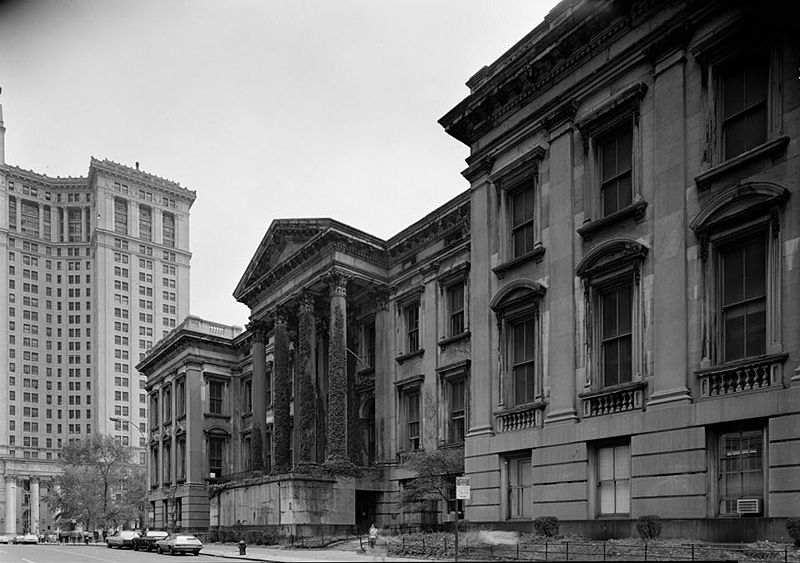 Photo via Library of Congress
Photo via Library of Congress
Post-renovation with its stairs restored:
In 2004, the Public Art Fund organized an exhibition of Lichtenstein sculptures located in and around City Hall Park. One of the pieces, Element E, was installed in the rotunda of of the Tweed Courthouse. Element E, was conceived as part of a larger group of sculptures entitled Five Brush Strokes that Lichtenstein had never fabricated during his lifetime. Element E remained after the close of the exhibition becoming one of two Lichtenstein works, owned by the city, on view to all New Yorkers who are aware of their existence.
The Tweed Courthouse is located at 52 Chambers Street and is located within a block most subway lines. Information on the tours of the courthouse can be found at https://www.nyc.gov/html/artcom/html/tours/tweed.shtml.


